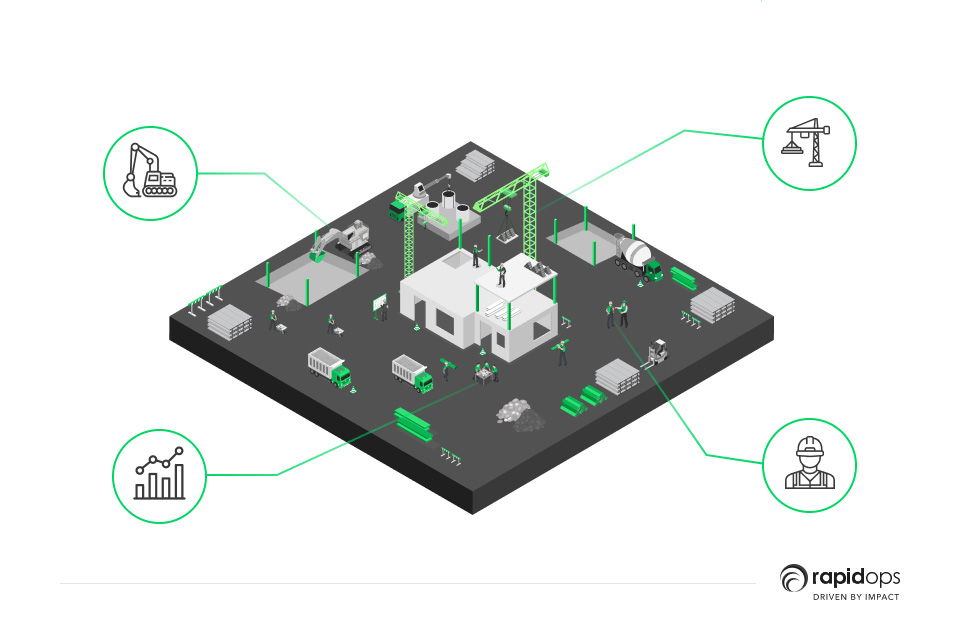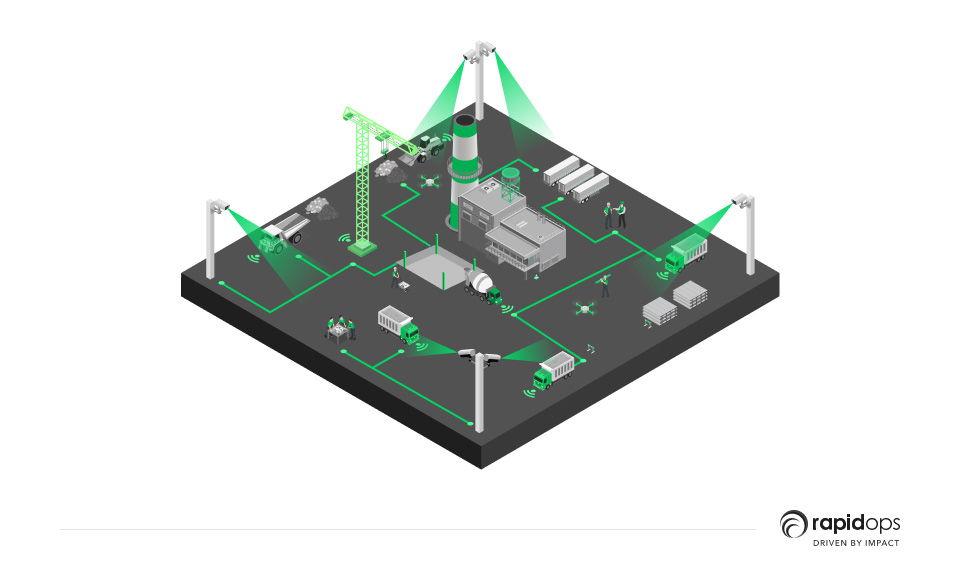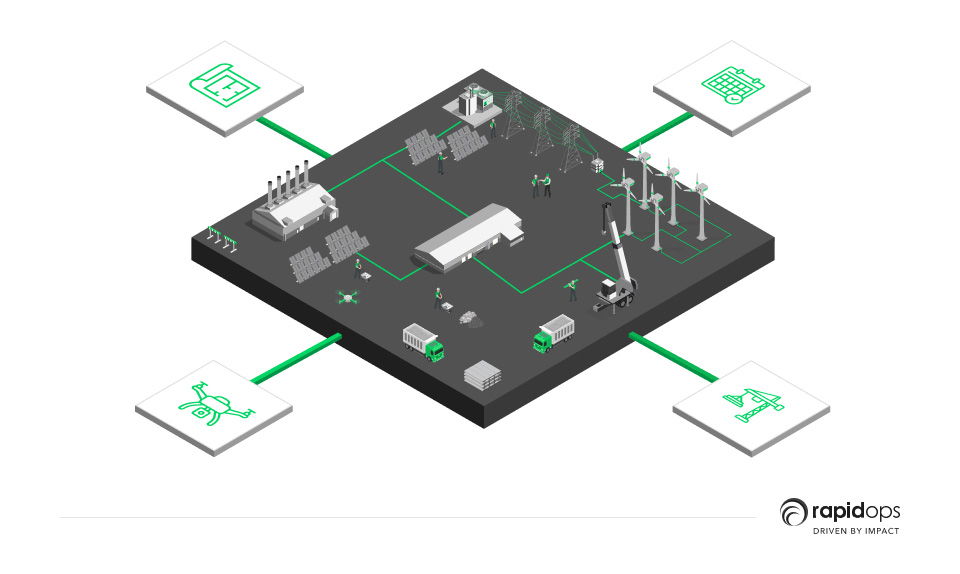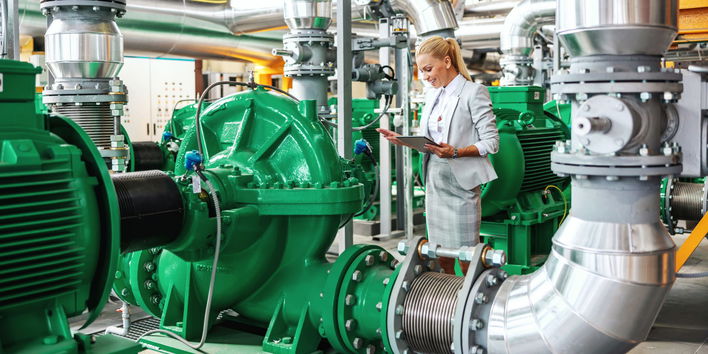Efficiency and productivity have been the driving forces for introducing technology in the modern business environment, and the same applies to the construction industry as well. The COVID-19 pandemic pushed back revenues, disrupted the supply chain, and halted global construction contractors. With restrictions on workforce and raw materials movement, the industry was hit with all-time low profitability.
Surviving the market was tough, with news of shutdowns and losses coming in from all market segments. Amidst the restrictions, the construction industry faced some significant challenges such as:
- Difficulty in accessing the worksites
- The pressure of completing the pending projects
- Increase in related costs due to logistics disruption
- Halted or canceled projects
“Naming the Covid-19 pandemic as the sole reason for the tumultuous market downfall is inappropriate”. The reason for this statement is simple. Many businesses showed resilience during the pandemic by adopting digital transformation to move their siloed data and processes towards a centralized and accessible repository.
We do not need to stress the importance of having a centralized data repository and advanced data analytics for gaining faster insights and decision-making.
The construction industry must move away from its traditional processes to stay resilient in future adverse situations. Our building materials industry brief tries to uncover some important construction industry trends, actionable insights, and monetizable opportunities for efficient growth.
Apart from adopting innovative technologies, they must create a new mindset, establish new processes, and build a better roadmap to implement digital transformation successfully. In short, integrating the fragmented processes, operational data, systems, and people is crucial for overcoming the present limitations.
According to McKinsey and Company, the productivity factor in the construction industry has stayed stagnant for the past decade.
The construction ecosystem is complex and has a more traditional approach to collecting, storing, and analyzing process data. We are stressing more on data because modern digitized construction tools technologies either need data input or create data in bulk.
In the case of a significantly complex project, the outcome depends on the combined performance of multiple raw material suppliers, contractors, and workers. For the top management, gaining deeper and better visibility in the proper execution of these complex projects gets tricky.
Budget inaccuracies, approval delays, and wrong scheduling from subcontractors cause delays in the construction projects. As per McKinsey, construction projects take 20% longer to complete than their initial schedule and can go 80% over budget.
The average delay caused due to supply chain issues costs an estimated 20-30% of the project’s value. So, what does this statistic point out? We have a simple explanation.
The current construction ecosystem is slow in adopting the technologies required for the seamless operation of the job site. The data, resources, and workforces are siloed, and there is no visibility amongst the cross-functional processes.
What can be the solution? You guessed it right, connected construction. However, there will be a need to connect to the organizational data and make it accessible to the team.
A connected construction ecosystem removes this barrier and provides better visibility into their project completion.
What is connected construction?

Connected construction at its core is the creation of a working ecosystem where job sites, machines, raw materials supply chain, and workers are always connected for effective operational efficiency.
For construction companies, it is vital to create an open communication flow of information so that everyone involved in the job site has the correct information available with them at the right time.
In other words, it is a dynamic, always-on network that helps in the continuous flow of information and analytics. Why is it necessary to have a connected construction ecosystem?
With seamless communication comes better, faster, and profitable construction project management. Connected construction links an entire project lifecycle from design to building to final handover.
Challenges faced by the construction industry during the Covid-19 pandemic
The entire construction industry, from business owners, architects, contractors, subcontractors to supply chain vendors, experienced a varying degree of disruption during the COVID-19 pandemic.
The overall challenges occurred due to the disruption in the supply chain structure of the building materials supplier, the construction companies, and their respective projects.
The slowdown in the movement of raw materials and labor and, in some extreme cases, delay in the construction projects are severe impacts of the lockdown implemented amidst COVID-19. The following challenges were the primary reasons for the disruption of the construction industry.
1. Hike in material prices
Raw material and resource prices are up 23.1% year-over-year, according to Associated Builders and Contractors (ABC)
Along with restrictions in the movement of goods and labor, the industry got affected by fluctuations in raw material prices.
Due to a strained economy, the increase in global demand for raw materials fueled the rise of costs, which is expected to continue in the post-COVID world. Such an unprecedented expense has affected the real estate economy.
This has, in turn, forced many construction businesses to operate with a minimum profit margin.
2. Labor shortage
The industry was facing the issue of construction labor shortage even before the pandemic. During the pandemic, there was a restriction on labor and resource movement, thus creating a labor shortage in the industry.
The said labor shortages have increased due to low wages, health concerns, occupational safety hazards, family demands, etc. amongst the workers.
3. Supply chain disruption
Procurement and ensuring the consistent supply of raw materials had become a significant challenge with the onset of the pandemic, which is still an active concern for the industry.
Wood, cement, aggregates, metals, bricks, concrete, and clay are common building materials used in the industry, and there is an ongoing shortage of their supply.
The entire supply chain for construction raw materials is disrupted, and construction businesses find it challenging to rely on a single supplier to obtain the essential building materials.
Influence of technology on the construction industry

The previous technological revolution brought various power tools, lifts, cranes, and other elements to the construction site. But post that, the construction industry has shown a sluggish pace in adopting other technologies that are revolutionizing significant sectors.
Post pandemic, companies have included investments in technology projects as crucial strategic decisions. For examples of successful technology adoption in other sectors, visit our manufacturing industry page.
The technologies being adopted by these companies include:
- IoT data collection custom apps
- Building Information Modeling (BIM) Software
- Virtual Reality tools
- Wearable health and safety tech
- Big-Data analytics
- 3D Printing
- AI models and machine learning algorithms
The infusion of technology made construction sites safer, and workers gained efficiency with higher productivity levels and improved collaboration among teams while carrying out complex projects.
Many construction firms are using data analytics to gain insights for
- faster decision-making,
- better control over their raw material supplies, and
- improving health and safety measures for their onsite workforce
Various construction firms are turning their massive datasets into insightful information with advanced artificial intelligence (AI) and machine learning algorithms.
They are also clubbing it with big data analytics for better insights into their processes. This helps them predict their subsequent project outcomes based on historical project datasets.
How can you make construction more “connected” and successful?
Let’s look at some interesting details regarding the influence of technology in the construction industry.
1. Industrial Internet of Things
The Internet of Things (IoT) plays a significant role in construction. With insights obtained from the data from IoT-connected devices and sensors, construction companies witness better productivity, operational efficiency, and job site safety of the workers.
By enabling sensors, construction sites can boost site visibility and improve operational productivity throughout the project life cycle.
Some of the best examples of IoT solutions in construction:
- Unmanned aerial vehicles (UAV) for monitoring the job site
- Autonomous trucks for delivering construction materials
- Health and safety wearables assigned to workers
- IoT sensors embedded in concrete during casting for compressive strength measurement
2. Augmented reality
The construction industry is also adopting augmented reality (AR) in 3D modeling buildings and job sites for running safety trials using digital twins.
Using AR simulations, construction companies create various worksite scenarios where construction workers experience safety training and get virtual walkthroughs.
3. Bot workers
Construction robotics market to reach $7.88 Bn, globally, by 2027 at 23.3% CAGR – Cision PR Newswire
Artificial intelligence (AI) company Doxel has designed a robot that navigates construction sites, checks the status of ongoing building projects, gathers data, and analyzes the same for identifying potential problems.
Robots are also being used throughout the construction process, such as the long-armed bricklaying robots. Apart from being faster at laying the bricks, these bot workers also utilize data for predicting real-time environmental fluctuations in the job site, such as wind speed, direction, or vibrations.
Let’s see an actual use case of bot workers. For instance, before beginning a construction project, bots survey and inspect sites, aerial drones, or ground-based robots gather data and feed data back to the control center. Here, site managers gain more insights by using big data analytics tools on this data and draw insights related to the job site.
Conclusion: The future of construction needs investment in a more connected ecosystem

Digital technologies such as real-time data analytics and IIoT have the potential to transform the construction space by
Connected construction allows project managers to break process data silos, drive down unnecessary costs, and improve overall project execution; bringing in more profits.
It also allows construction companies to gain valuable insights and visibility into the entire construction process to plan their future projects in a better manner.
If they implement integrated workflows across the entire project cycle, the construction firms can take better advantage of their processed data that holds crucial insights.
The success of projects depends on creating a roadmap for implementing connected construction so that every progress is tracked and uploaded to the central project database in real-time.
Many construction firms have already started adopting technology. Most modern companies are researching and implementing technology for reaping better productivity, collaboration, and faster project completion time.
Are you still unsure about the benefits of connected construction technologies? Then you need to associate with a digital experience company like Rapidops that can help you take a more strategic approach to transform your traditional construction processes digitally.

Saptarshi Das
Content Editor
9+ years of expertise in content marketing, SEO, and SERP research. Creates informative, engaging content to achieve marketing goals. Empathetic approach and deep understanding of target audience needs. Expert in SEO optimization for maximum visibility. Your ideal content marketing strategist.

Let’s build the next big thing!
Share your ideas and vision with us to explore your digital opportunities
Similar Stories
- Strategy
- undefined Mins
- February 2017

- Strategy
- 19 Mins
- August 2023


Receive articles like this in your mailbox
Sign up to get weekly insights & inspiration in your inbox.

